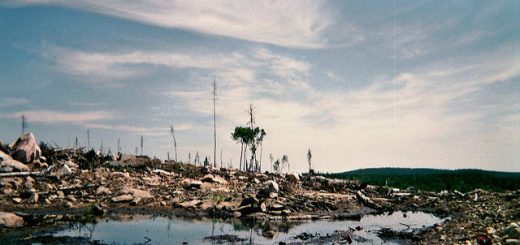Resolute v Ontario: Corporations no longer indemnified from provincial order to remediate mercury contamination
In the context of environmental land and water contamination, tribunals and courts have the difficult role of ensuring the appropriate parties are held liable for remediation without completely discouraging brownfield development – the revitalization of contaminated lands. To what extent should property owners be insulated from environmental liability related to historical pollution that occurred long before they took ownership? The Supreme Court of Canada considered this question in Resolute FP Canada Inc v Ontario, 2019 SCC 60 [Resolute].
The Facts
In the 1960s, Dryden, Ontario was home to a booming pulp and paper mill, situated along the Wabigoon River. As part of the operation, the Dryden mill used mercury to produce chlorine used to bleach the paper. In this process, untreated mercury waste was released into the English and Wabigoon rivers, causing adverse health effects on local residents and the closure of a commercial fishery. Mercury made its way into food and water sources of communities situated downstream the mill, like Grassy Narrows and Islington First Nations, and the effects of the contamination are still felt in these communities.
The 1985 Indemnity
The two First Nations bands commenced litigation, suing for damages arising from mercury contamination. The property owner at the time wanted to sell the mill properties but was unable to because of the pending litigation. In an effort to ensure the Dryden mill remained open and operational, the Government of Ontario intervened and entered into an indemnity agreement with a prospective buyer of the properties. Under the agreement, the Government of Ontario agreed to indemnify the new owners against any claims, above $15 million, related to mercury pollution caused by the operation of the Dryden mill.
2011 Remediation Order
Twenty-six years later, the Ontario Ministry of Environment and Climate Change issued a Remediation Order with respect to the monitoring of proper mercury disposal on the property. While property ownership had changed hands several times since the 1985 indemnity agreement, the remediation order was issued to Weyerhaeuser (the former owner of the properties) and a successor company to a previous owner, Resolute FP Canada. The order, among other things, required the companies to perform ground water testing, provide the Ministry with a $270,000 assurance in respect of a waste disposal site, and take all reasonable measures to ensure the prevention of any discharge of a contaminant to the natural environment.
Procedural History
In 2013, Weyerhaeuser commenced an action seeking a declaration that the 1985 indemnity agreement required the Government of Ontario to compensate for the costs required to comply with the Remediation Order. Resolute intervened. The motion judge found the indemnity applied to the Remediation Order and granted summary judgement in favour of Resolute and Weyerhaeuser. Ontario appealed.
The majority of the Ontario Court of Appeal largely agreed with the motion judge and dismissed the appeal. Ontario was liable to cover the costs of the Remediation Order. In his dissent, Justice Laskin would have allowed Ontario’s appeal and found the motion judge erred in his interpretation of the 1985 agreement.
The Supreme Court Decision
In a split 4-3 decision, the Supreme Court overturned the lower court’s decision, with the majority (joint reasons by Abella, Moldaver, Karakatsanis, and Martin JJ) finding that the 1985 indemnity agreement did not apply to the Remediation Order, leaving Resolute and Weyerhaeuser on the hook for remediation costs.
The majority’s decision was based on the following findings:
- The motion judge failed to consider that surrounding factual matrix that gave rise to the 1985 agreement. The agreement indemnified the property owner from claims brought by third parties such as Grassy Narrows and Islington First Nations. The Government of Ontario was a party to the 1985 agreement and so, cannot be considered a third party with respect to the Remediation Order (Resolute, para 33). Further, there was no language in the indemnity agreement that provided for protection against the costs of regulatory compliance (Resolute, para 30).
- The motion judge erred in expanding the scope of what constitutes a “pollution claim” within the meaning of the 1985 agreement. The indemnity agreement was intended to cover claims arising from the presence of mercury discharged in surrounding ecosystems. The 2011 Remediation Order is not a pollution claim, but rather an order that requires monitoring and maintenance related to mercury contained on the property. In other words, the scope of the indemnity agreement is limited to pollution claims and the motion judge erred in finding that, at the time of the order, the mill continued to discharge mercury into the environment (Resolute, para 28).
The dissenting judges – Côté and Brown JJ. (Rowe J. concurring) – found that Resolute, as a successor company, is entitled to rely in the 1985 indemnity to cover the costs of the order. Weyerhaeuser, on the other hand was not a party to the 1985 agreement nor a corporate successor and thus, has no entitlement to benefit under the indemnity.
Analysis
This decision provides some caution to corporations and landowners on the limitations of environmental indemnities within a contract. The scope of the indemnity may be limited to the factual matrix at the time the agreement is entered. Corporations should not assume an indemnity agreement insulates them from future regulatory liability.
The spirit of the Supreme Court’s decision signals that successor companies may be liable for past environmental contamination, even in the presence of an indemnity agreement. In this case, Resolute and Weyerhaeuser inherited the site from entities that were responsible for the pollution. They are nevertheless liable.
For corporations, this represents unforeseeable risk and ongoing regulatory liability when purchasing historically contaminated sites. Section 18 of the Ontario Environmental Protection Act, RSO 1990, c E 19, creates an absolute liability provision that allows the Ministry to order that historic contamination be investigated and remediated. The provision empowers the Director to enforce preventative measures that can be costly for corporations.








Join the conversation